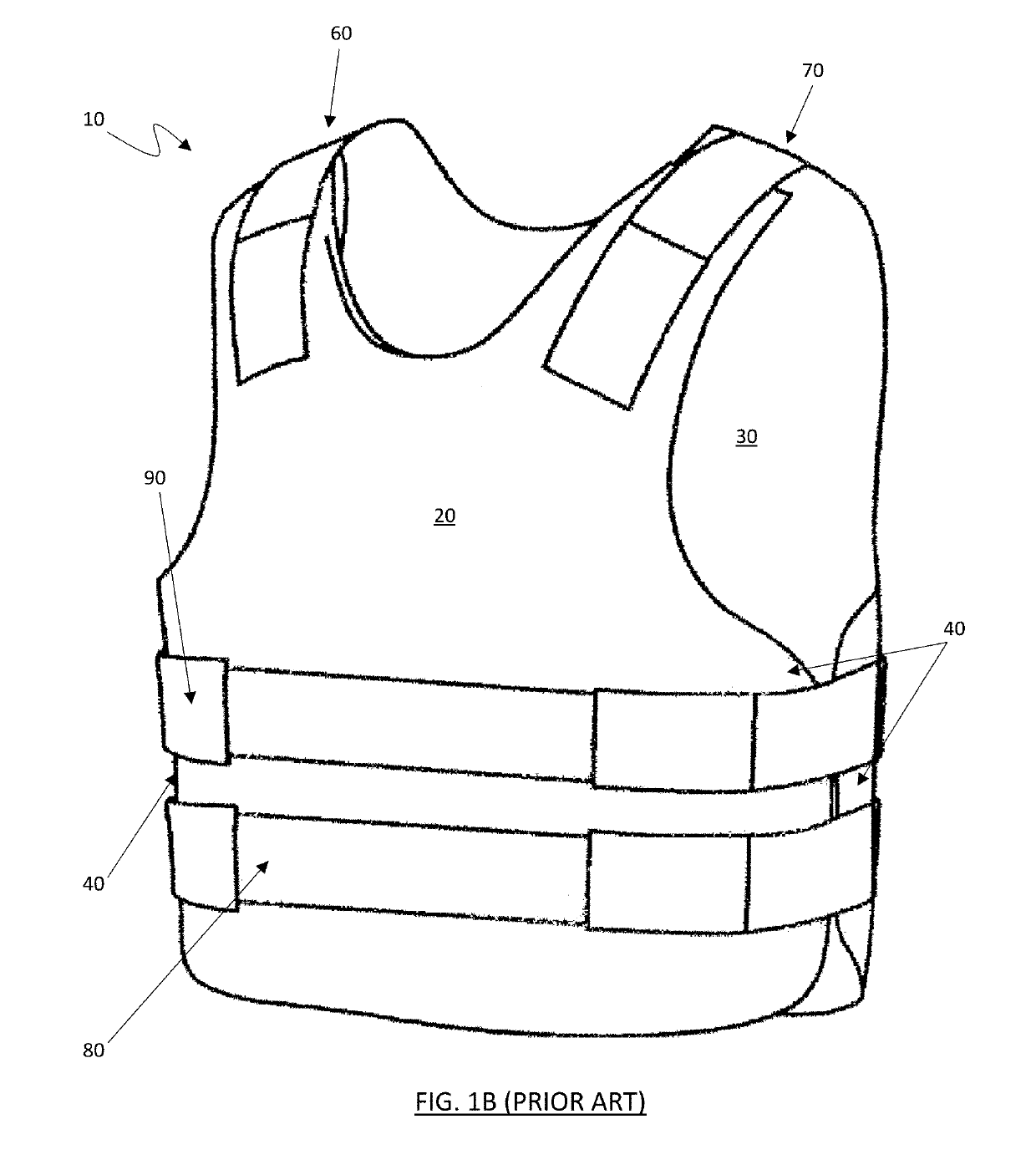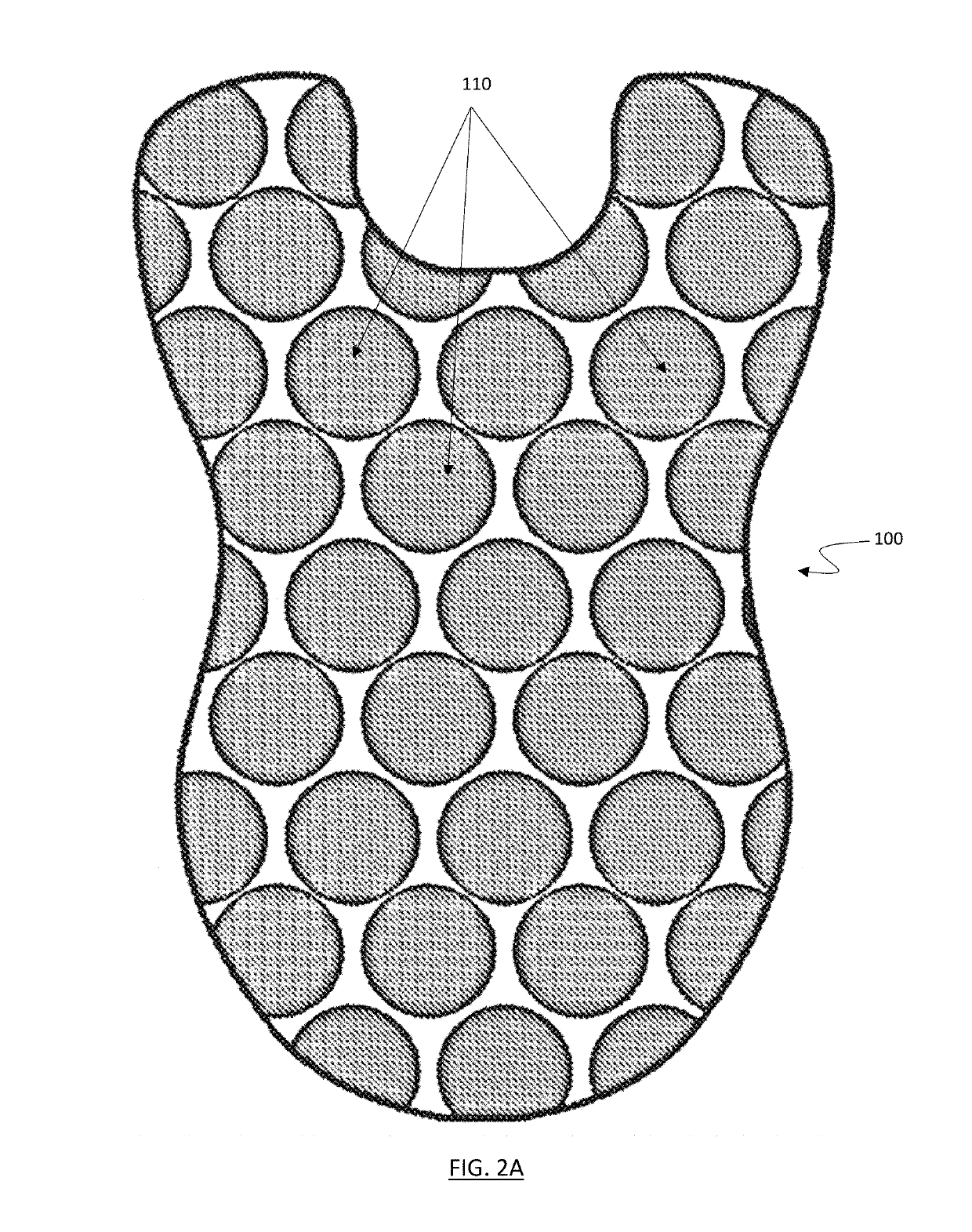Impact Absorbing Structures in Body Protective Equipment
a technology of body protective equipment and impact absorption, which is applied in the direction of protective garments, other domestic articles, synthetic resin layered products, etc., can solve the problems of limited protective garment designs, heavy layers of material, bulky and/or uncomfortable wear, and existing designs that fail to protect various body parts of wearers, etc., to achieve low and/or high velocity impacts, reduce garment weight and bulkiness, and the effect of sufficient impact absorption and/or distribution
- Summary
- Abstract
- Description
- Claims
- Application Information
AI Technical Summary
Benefits of technology
Problems solved by technology
Method used
Image
Examples
Embodiment Construction
[0074]In various embodiments, a protective garment is disclosed that includes an outer layer, an intermediate or reflex layer and an inner layer. The outer layer can comprise one or more relatively rigid components, sheets and / or plates, or can comprise a layered construct of one or more flexible and / or semi-flexible components. The inner layer can comprise one or more relatively rigid components, sheets and / or plates, or can comprise a layer construct of one or more flexible and / or semi-flexible components. The inner layer desirably is the structure which contacts the wearer and the outer layer is the structure facing towards the impacting item. In between these two structures, various impact absorbing materials, impact absorbing structures, or combinations of impact absorbing materials and impact absorbing structures may be placed to increase comfort for the wearer and reduce the transmission of impact forces to the wearer's anatomy. Hereinafter, these impact absorbing material an...
PUM
| Property | Measurement | Unit |
|---|---|---|
| thickness | aaaaa | aaaaa |
| diameter | aaaaa | aaaaa |
| height | aaaaa | aaaaa |
Abstract
Description
Claims
Application Information
 Login to View More
Login to View More - R&D
- Intellectual Property
- Life Sciences
- Materials
- Tech Scout
- Unparalleled Data Quality
- Higher Quality Content
- 60% Fewer Hallucinations
Browse by: Latest US Patents, China's latest patents, Technical Efficacy Thesaurus, Application Domain, Technology Topic, Popular Technical Reports.
© 2025 PatSnap. All rights reserved.Legal|Privacy policy|Modern Slavery Act Transparency Statement|Sitemap|About US| Contact US: help@patsnap.com



